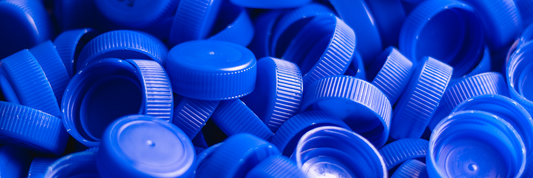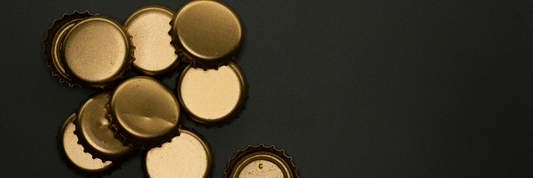In the evolving world of wine packaging, sustainability and innovation are reshaping the industry. One of the most exciting debates revolves around paper wine bottles versus traditional glass wine bottles. While glass has been the gold standard for centuries, paper bottles are emerging as a compelling alternative, promising environmental benefits and modern appeal. This post will dive into the key differences, advantages, and challenges of both types to help brands and consumers make informed decisions.
- The Ultimate Guide to Wine Bottles: Types, Manufacturing, and How to Choose the Perfect Bottle for Any Occasion
- A Complete Guide to Wine Bottle Shapes and Their Significance
- Corks vs. Screw Caps: A Comprehensive Guide to Wine Bottle Closures
What is a Paper Wine Bottle?
Definition and Composition
A paper wine bottle is an eco-friendly alternative to traditional glass packaging, made primarily from recycled paper and lined with a plant-based PLA (polylactic acid) liner to ensure wine quality and safety. Its lightweight design and biodegradable materials aim to reduce environmental impact.
How Paper Wine Bottles Are Made
Paper wine bottles are crafted using advanced layering technology. Recycled paper forms the outer structure, providing rigidity and a sleek finish, while the PLA liner inside acts as a protective barrier, maintaining the wine's integrity.
Popular Brands Using Paper Wine Bottles
Leading brands like Frugalpac and When in Rome have adopted paper bottles for their sustainable wine lines. These brands emphasize reduced carbon footprints and innovative design to appeal to eco-conscious consumers.

Traditional Glass Wine Bottles
History and Evolution of Glass Wine Bottles
Glass bottles have been synonymous with wine storage for centuries, dating back to ancient Rome. Their durability and inert nature made them a natural choice for preserving the flavor and quality of wine.
Materials and Composition of Glass Bottles
Glass wine bottles are typically made of clear, green, or amber glass. These colors serve practical purposes: clear for aesthetics, green for UV protection, and amber for enhanced light resistance.
Advantages of Glass Bottles for Wine
Glass bottles are renowned for their durability, long shelf life, and ability to preserve wine quality. Their inert properties prevent chemical interactions, ensuring the wine's original flavor remains intact.

Paper Wine Bottles vs. Glass Wine Bottles: Key Differences
Environmental Impact
Paper bottles have a significantly lower carbon footprint than glass, thanks to their lightweight design and compostable materials. Glass, while infinitely recyclable, requires more energy for production and transportation.
Durability and Protection
Glass bottles offer superior durability and protection against light and heat, making them ideal for long-term storage. Paper bottles, while robust, may not provide the same level of protection for premium wines.
Cost Comparison
Paper bottles are generally more cost-effective to produce and transport due to their lightweight nature. Glass bottles, though pricier, often align with the luxury branding of high-end wines.
Consumer Perception and Aesthetics
Traditional glass bottles are associated with luxury and heritage, while paper bottles are viewed as modern and eco-friendly. Perceptions vary depending on consumer priorities.
Weight and Transportation Efficiency
Paper bottles are much lighter, reducing shipping costs and emissions. Glass bottles, while heavier, offer greater stability during transport.
Pros and Cons of Paper Wine Bottles
Pros
- Eco-Friendly and Sustainable: Made from recyclable and biodegradable materials.
- Lightweight for Reduced Transportation Emissions: Lower shipping costs and carbon footprint.
- Recyclable and Compostable Options: Environmentally friendly disposal.
- Cost-Effective for Certain Brands: Ideal for companies focusing on affordability and sustainability.
Cons
- Recycling Limitations: Not universally recyclable due to the PLA liner.
- Lower Strength: More susceptible to damage during handling.
- Oxidation Risks: PLA liners may not offer the same airtight seal as glass.

Pros and Cons of Glass Wine Bottles
Pros
- Preserves Wine Quality and Flavor: Inert material ensures no flavor contamination.
- Established Consumer Trust: Long-standing association with premium quality.
- Reusable and Recyclable: Infinitely recyclable with minimal quality loss.
- Durability for Long-Term Storage: Ideal for aging wines.
Cons
- High Energy Consumption: Production and recycling require significant energy.
- Heavier Weight: Increases transportation costs and carbon emissions.
Which Wine Bottle Type is Better for Your Brand?
Considerations Based on Brand Image
Luxury-focused brands may lean toward glass, while eco-conscious brands can differentiate themselves with paper.
Target Audience Preferences
Younger, eco-conscious consumers are more likely to embrace paper bottles, while traditionalists may prefer glass.
Shelf Life and Wine Type
High-end wines requiring aging benefit from glass, while everyday wines can thrive in paper packaging.
Innovation and Brand Differentiation
Paper bottles offer unique branding opportunities and a modern edge for standing out in the market.
Conclusion
Both paper and glass wine bottles have their strengths and weaknesses. While glass excels in preserving wine quality and offering timeless appeal, paper bottles are the eco-friendly choice for brands prioritizing sustainability and cost-efficiency. The right choice depends on your brand’s image, target audience, and environmental goals. For a future-conscious wine industry, striking a balance between tradition and innovation is key.









